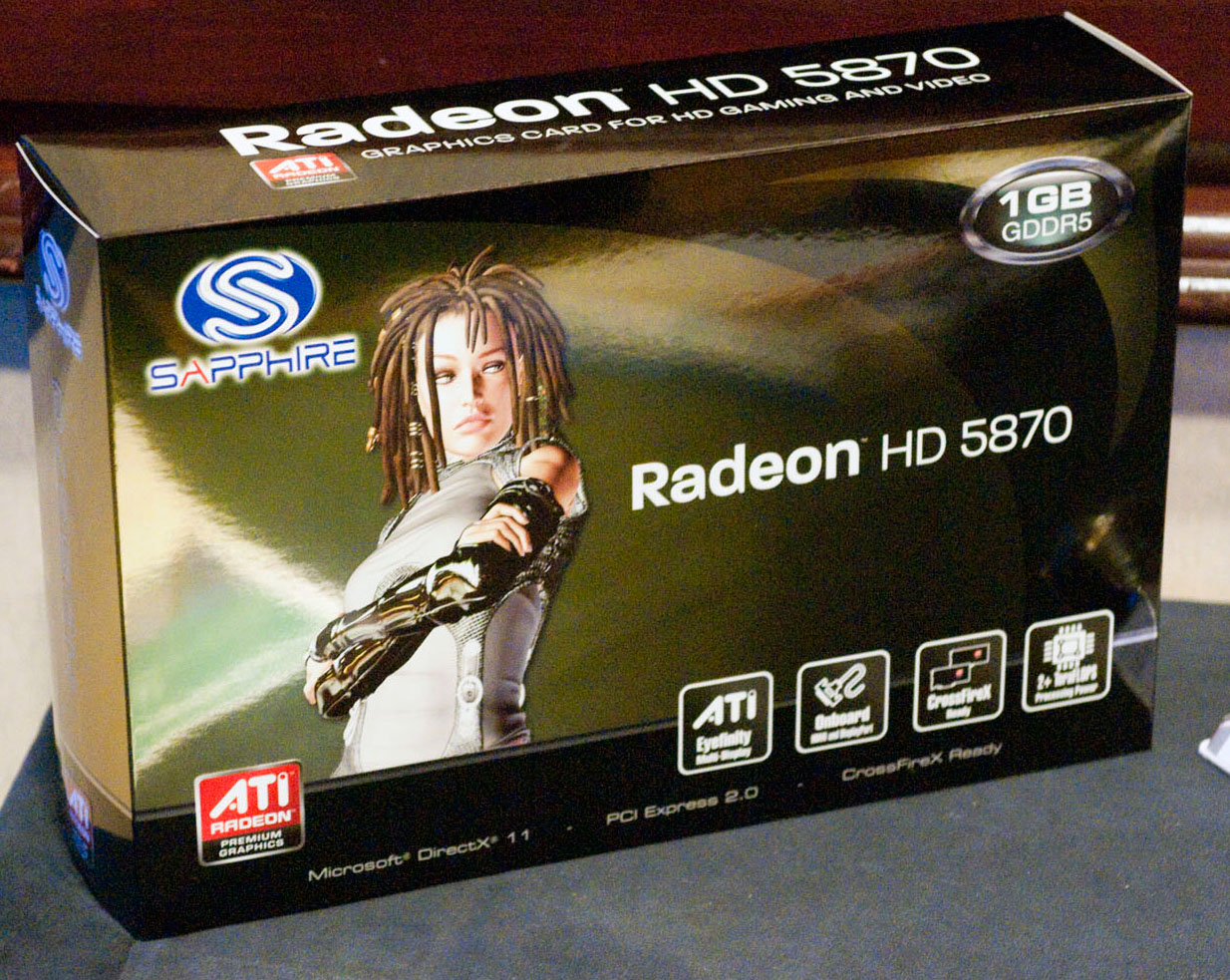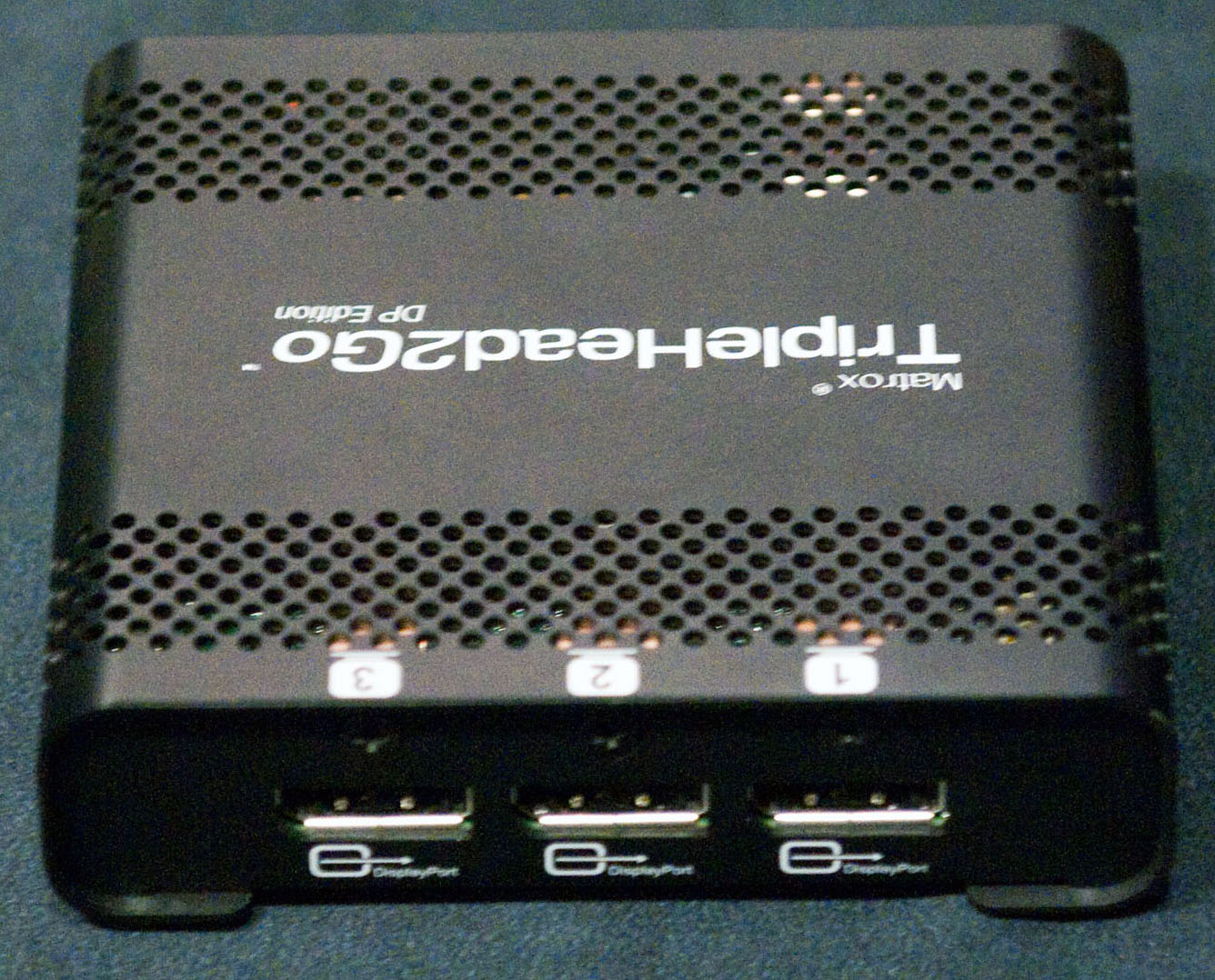Intel Developer Forum, Day Two: 6 Gb/s, USB 3.0, And Lucid
DisplayPort And SATA 6 Gb/s
There’s always a lot of focus at IDF on Intel’s processor roadmap. What’s the next CPU? How is Moore’s Law progressing? What’s the next tick or tock in Intel’s clockwork process for advancing design and manufacturing?
Having a fast CPU is great, but you need an underlying support structure to get the most out of that processor. Whether it’s a fast GPU, like ATI’s spiffy new Radeon HD 5870, the imminent release of SATA 6 Gb/s hard drives (and the motherboards to support them), or the penetration of DisplayPort into the mainstream, supporting technologies are the underlying infrastructure that actually enables a PC to be useful.
We’ll also take a quick look at Moorestown, Intel’s next-generation Atom processor. Surprisingly, Moorestown will bear little resemblance to the existing Atom platform (code-named Menlow), other than being an x86 CPU. But first, let’s look at DisplayPort.
DisplayPort
DisplayPort will eventually be the replacement for DVI and, we can fervently hope, the ever-present analog VGA connector. One of the more intriguing features of DisplayPort is that clocking is embedded in the data signal. What does this mean?
This use of an embedded timing source is one of the key hardware drivers behind AMD’s Eyefinity technology. Right now, a dual-display DVI card has a separate timing signal per DVI port, so you can connect to two displays. The recently-shipping AMD Radeon HD 5870 can connect up to three displays on any combination of the included DisplayPort, HDMI, and DVI connectors.
However, the Radeon HD 5870 has only two built-in display timing sources. If you want to connect three DVI displays, you actually need to get what’s known as an active DVI-to-DisplayPort adapter. On the other hand, if one of your displays has a DisplayPort connector, it can take advantage of the 5870's additional DisplayPort pipelines without the necessity for a third timing source. At some point, AMD will be shipping a card with six DisplayPort outputs capable of utilizing all six of the Cypress chip's pipelines, which is how they can connect as many displays.
Get Tom's Hardware's best news and in-depth reviews, straight to your inbox.
DisplayPort also has the bandwidth to handle very high resolutions with a single DisplayPort link. Moreover, DisplayPort will be embedded into notebook panels, which will finally replace the aging LVDS standard. The result will be higher refresh rates and higher resolutions on the road. DisplayPort even has capability for 3D displays by allowing for left/right eye channel implementations.
DisplayPort looks to be the most important connectivity standard for the PC since the emergence of DVI. Its impact may, in the long run, be bigger than HDMI (at least on the desktop; HDMI is more of a consumer electronic interface), though it won’t supplant HDMI. More likely is that the VGA and, eventually, the DVI port, will finally fade away.
SATA 6 Gb/s
So far, all the demos we’ve seen of the latest update to the Serial ATA standard, SATA 6 Gb/s, have been with rotating media. That’s right--we’ll soon see several families of good old hard drives running on the latest SATA standard. Both Asus and Gigabyte are now shipping motherboards with SATA 6 Gb/s controllers built onto the main board, and these were on display at the show as well.
Why rotating media? As it turns out, hard drive densities are going up at a rapid rate and cache sizes are increasing. Seagate, for one, foresees a time when data streaming off the outer tracks of a high capacity hard drive can actually saturate a 3gbps interface. Of course, RAID striping and fast SSDs will also likely saturate the bus.
Already, Seagate has announced a premium, 2TB drive with 64MB of cache, with a SATA 6gbps interface built in. That interface is backward compatible to SATA 3gbps and SATA 1.5gbps.
-
JohnnyLucky Interesting article. I'm finding it more and more difficult keeping up with all the technology.Reply -
burnley14 It's interesting that USB 3.0, DisplayPort, and Sata 6 would all be coming to fruition at about the same time, since they are all interfaces/portsReply -
battery i'm really looking forward to usb 3.0, not to say that the other techs aren't as impressive, i'm just tired of the depressingly slow usb 2.0Reply
i've always been a fan of display port, definitely gonna pick up a 5870, perhaps an X2..
whats all this boycott intel spam shit? -
apache_lives saljr its 99.9999999% safe to say your typing away on some form of device that has something to do with some form of Intel developed technology - boycotting intel is like burying your head in the sand and saying you dont want better products ever - at the end of the day there the market leaders bringing us new stuff all the time - say thank you if anything :DReply
also thank AMD for competition -
apache_lives batteryi'm really looking forward to usb 3.0, not to say that the other techs aren't as impressive, i'm just tired of the depressingly slow usb 2.0i've always been a fan of display port, definitely gonna pick up a 5870, perhaps an X2..whats all this boycott intel spam shit?Reply
wonder if its compatible and capable of converting back to VGA/15 pin monitors - got two 19's still -
This is interesting!Reply
It's going to bring new challenges to benchmarks, as now you'll need a fixed room temperature to benchmark systems with turbo boost.
Benchmarks tested of the same device, in cold or hot environments could give different results. Something perhaps not noticable with Corei7 machines, but on atom levels a 10 degrees C environment could boost the benchmark by several frames per second over a 35 degrees environment.
I hear all of this, and wished we could already buy a netbook with turbo boost on CPU and GPU, and a netbook equipped with PixelQi's LCD!
Add that to a 6cell battery, that gives 18 hours of battery life, and I'm sold!
Hope those netbooks will stay under $300 though! -
underapew USB 3.0 is soooooooooo needed - speed looks good - is there +12v support, or just +5 - we need an interface that can support 7200 rpm drives with 1 connectionReply

